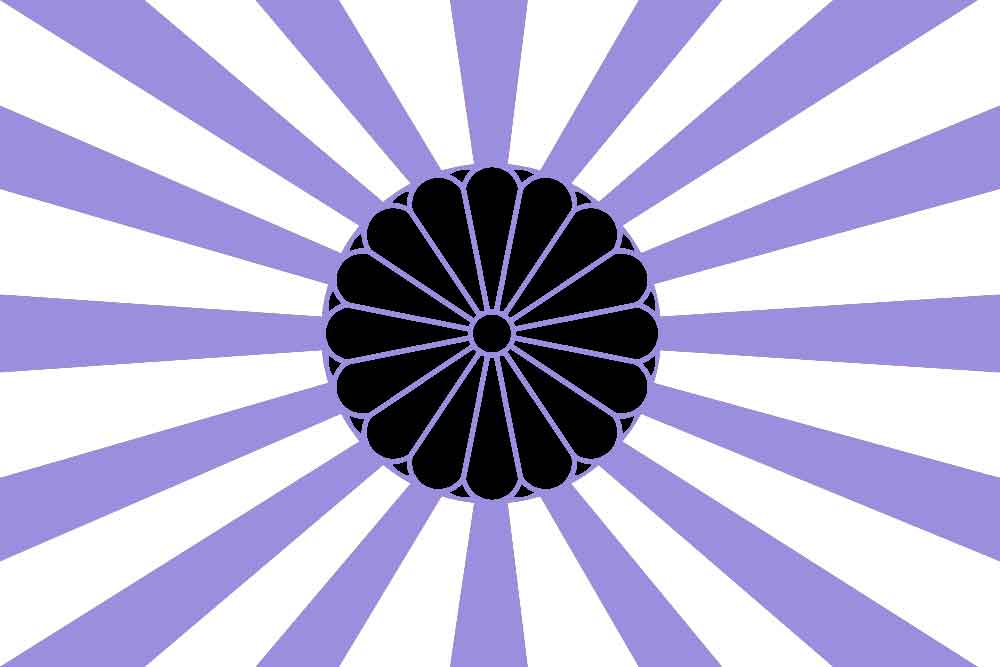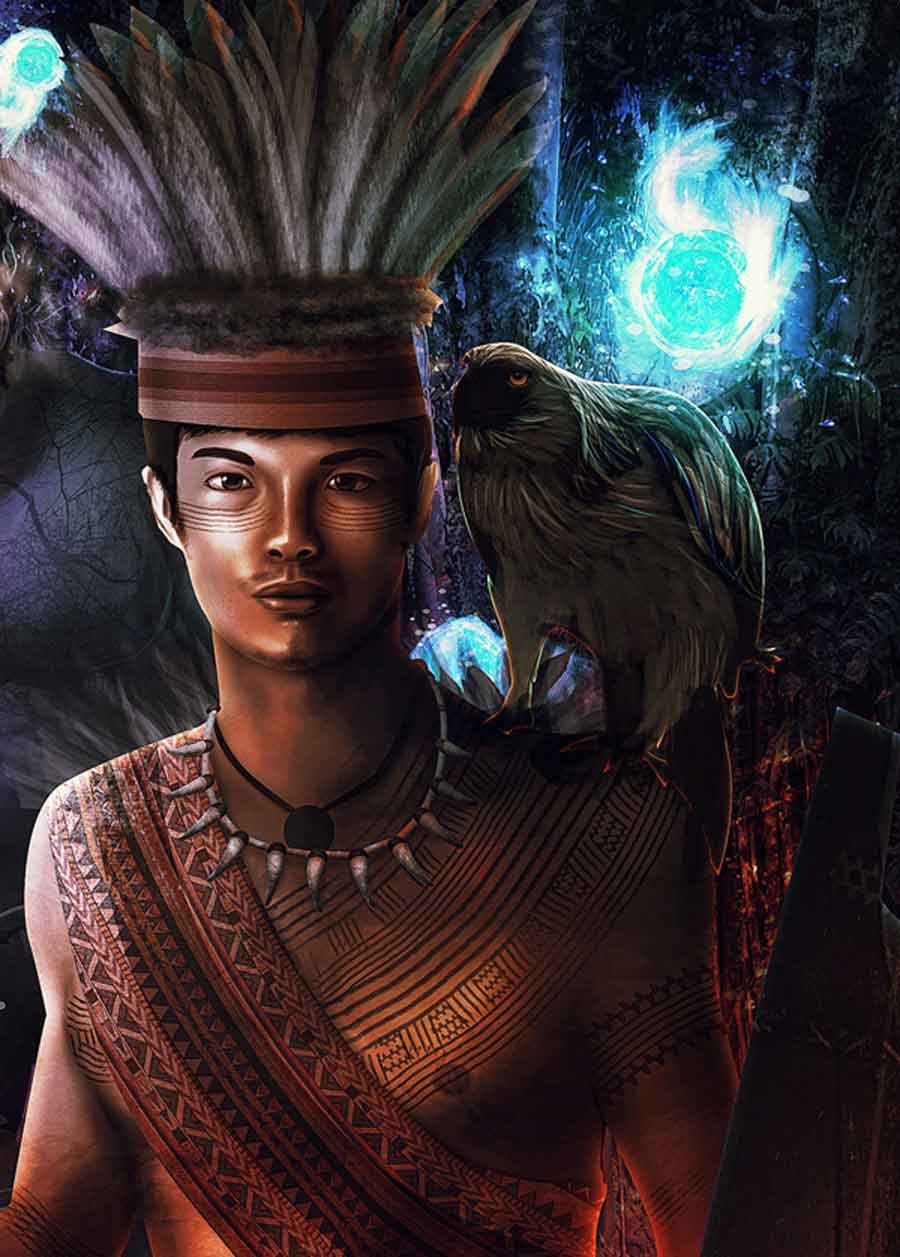Two young nations have begun to emerge in recent times forming in the chain of small islands off the southern coasts. Though these islands are numerous and unexplored they remain populated and continue to thrive away from the eyes and ears of the larger and more established nations of Lungshi.
The Kingdom of Bawa
The Kingdom of Bawa is an advanced and civilized nation, epitomizing the future for
many southern islands; but it also has unexplored, wilderness territories inhabited by headhunters and fantastic beasts, and these places are similar to the more primitive islands of the south. Bawa is the name of both island and kingdom. The kingdom includes the island, albeit in name only in some wild regions, as well as the nearby island of Rukun. The Bawanese lifestyle was originally agricultural and simple. Nucleic families grew into the barangays, or extended families. Some barangays became more successful than others, particularly those that became involved in trade as well as agriculture. The villages of Nahdatul, Nadepaan, and Djagong became towns, and the most powerful barangays became the ruling families from whence came Bawas first princes. Ultimately, through marriage, the Nadepaan barangay gained rulership of all the island. During the reign of Urip III and, now, Nahdat II, they have experienced a time of unprecedented prosperity and commercial growth, one which seems likely to continue for a long time. The island of Bawa is of volcanic origin, though none of its mountains are known to be active. It contains two regions of note, the Bavanese Plains and Bawani Mountains. Though the Kingdom of Bawa claims the entire island, wilderness still covers much of Bawa, most of it unexplored.
Bavanese eyes and interests have typically looked out toward the sea rather than in toward the jungles and mountains. The hills in the northwest have always been wild and avoided. The soil is poor, and few animals make it their home. Consequently, it is a desolate place and a favorite haunt of monsters and fugitives. Some explorers have returned with tales of ancient ruins found buried in the hills. Not enough information is possessed to compare these ruins, if they do exist, with other remains on the island, such as in the mountains. The jungles are the wildest and exotic part of Bawa. In the steaming vegetation is a plethora of fantastic and natural beasts. The natives of the jungles have learned how to coexist in a delicate equilibrium with their neighbors. Outsiders are more often want to barge through the jungle, stirring things up and causing themselves no end of hassle. Some ancient, vine-covered ruins have also been discovered here. Some suggest a race of demon-worshipers; perhaps yuan-ti, once held the jungles in their sway, though now they are but rarely encountered. Along the wilderness coasts, especially in the west, pirates are known to maintain strongholds.
The Bavanese Plains are a fertile region, owing chiefly to the rich, dark soil that points to the islands volcanic nativity. The region is farmed extensively, with the help of irrigation from the rivers. Rice is the staple, raised to feed the Bavanese populace. Larger landowners are involved in producing spices and, in few cases, fruit orchards. A few animals are raised: poultry for their meat, cattle, and goats for milk. Meat is not a very popular food in Bawa, and in fact, a number of religions forbid its consumption. The volcanic Bawani Mountain range is suspected to be rich in mineral deposits, but the Bavanese have not tapped its resources. Most of it has yet to be explored. The most curious ruins have been discovered on the mountains. Their ancient inhabitants cultivated rice and other crops on mountainside terraces. It is. not known whether these people were the ancestors of the present day Bawani, or why they disappeared or gave up their way of life.
The Kingdom of Bertan
The Kingdom of Bertan is Bawas rival to the east is a very similar culture. The main geographical difference is that Bertan evolved as a collection of small islands, while Bawa has been formed on a single piece of land. Some of the Bertanese islands used to be pirate haunts, and this is one reason that Bertanese is sometimes derisively labeled as a nation of pirates. This island, located to the northwest of Bawa, has acquired infamy of late since it became the new home base of many pirate bands. It had no previous human inhabitants, as far as is known.
Panjardu Island, located to the northwest of Bawa, has acquired infamy of late since it became
the new home base of many pirate bands. It had no previous human inhabitants, as far as is known.
Rukun Island was given its name, meaning cooperation, by the merchant families that first colonized it. Its history is well chronicled in the Bavanese timeline. Since the pirates were driven out, Rukun has turned to agriculture and fishing for its livelihood. Its most important products are flax and hemp, from which are made linen and rope. Most of the island is explored and settled. The one wild region left in the hills, where strange beasts are sometimes reported.
Sirat Island southwest of Bawa is, in fact, an active volcano. Its last major eruption was 269
years ago. The volcano is said to be frequented by strange spirits. Since its last eruption,
plants have taken hold on the island, and it is a haven for seabirds.











Comments